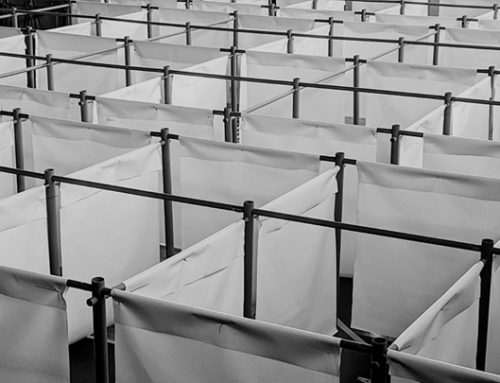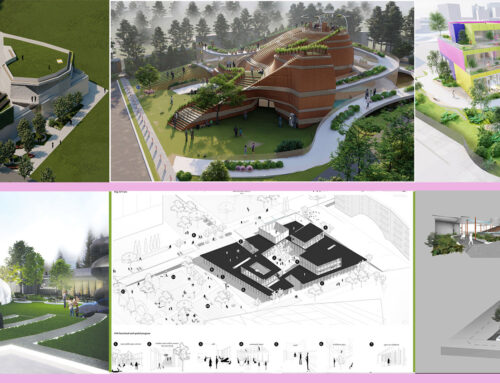Burning Man is an annual event that originated as part of a countercultural movement and marked its 30th anniversary this year. It takes place in the Nevada desert every year, generally in the late summer, and attracts visitors from all over the world.
The inventiveness of the participating architects and designers has produced more spectacular and complicated creations. Today, famous architects like Bjarke Ingels’ BIG are among those who designed the numerous homes and follies that are springing up in the Black Rock City. (1)
A festival of music and architecture
Arriving in Black Rock Metropolis, a remote desert community in Northern Nevada, was similar to the amazing first-time visitor experience one has in any major city. But every year brings a fresh surprise. This ever-evolving city was created by the attendees of the almost 30-year-old Burning Man event, and it was created for a purpose, just like every other city. It rises from the Black Rock Desert playa dust with Phoenix-like symbolism, is partially burnt down to rejuvenate, and yet has no equivalent anywhere in the world. It never stops changing.
Every year, the residents congregate to populate the playa with a variety of experimental buildings, architectural wonders, and transient works of art that differ in aesthetics, materials, and possibilities. At all scales, these experiments serve as platforms for discussions, performances, and exhibitions of art and music. As part of Burning Man’s 10 tenets, which promote extreme self-expression and engagement above spectatorship, it is crucial to both visit these absurdities and takes part in their life and development. (1)

Creativity is the limit
The majority of the restrictions architects deal with when it comes to codes, regulations, or city-by-laws are flouted in Black Rock City as a whole, creating an ephemeral framework upon which practically anything is conceivable. Almost anything can be constructed. The city’s pentagonal perimeter and truncated circular layout allude to influential conceptions about “the perfect city of the future,” including Chaux by Ledoux and the Garden City by Sir Ebenezer Howard. (2)

Installations, pavilions, and camps create shelters that serve as venues for educational lectures by the day before transforming into their nighttime selves to serve as stages for some of the most well-known DJs in the world. Nevertheless, there is no main stage, no city hall, and no single source of electricity. To experience this transitory metropolis, one must make the most of their time by interacting with people and inside themselves.
Design showcase from starchitects
This year’s participants in the competition were Bjarke Ingels, Ralph Nauta, and Michel Rojkind. The Orb, which depicts the Earth as a mirrored globe at a size of 1:500,000, was installed by BIG Idea (Bjarke Ingels and Jakob Lange). Although there were several technical difficulties during installation, its size and impact were undeniable. It created a strange impact, particularly when dust storms caused the Orb to seem to float above the playa, defying gravity. (2)

Ralph Nauta of Studio Drift, a famous designer who previously transformed the playa in 2017 with tens of thousands of interactive LED leaves that made an ethereal allusion to a tree, is back this year with Franchise Freedom. A homage to Larry Harvey, the co-founder of Burning Man who passed away unexpectedly this past spring, was performed by 600 flying LED drones that were managed from a central station. (2)
Joep Beving, a Dutch composer, provided the music for this amazing drone swarm in the deep playa’s night sky. The sight of these drones flying over their foreboding headquarters acted as a portent of more advanced technology to come, whose effects we can only speculate on. The concert was a suitable reminder and was sublime in its beauty.
One of the highlights of this year was The Temple, which serves as the playa’s main spiritual center. It soared up as a tornadic shape of parametrically triangulated timber beams that scaled as they twisted into the sky, according to the design by Arthur Mamou Mani. It was intentionally constructed as an effigy edifice that became totally massive in its last, mesmerizing moments. (3)

Beyond the physical, being among the pilgrims who made it to the playa this year was a very emotional experience. People behave differently; they are concerned about more than simply each other’s jobs. In actuality, I barely mentioned my job at all. People frequently leave and have strong feelings about returning to the competitive and survival-of-the-fittest society that has been their “default.” If Burning Man could teach us anything, it would be that there are ways for each of us to live more considerate, giving, inquisitive, and compassionate lives. (3)

REFERENCES:
- https://www.azuremagazine.com/article/architecture-of-burning-man/
- https://www.archdaily.com/987894/burning-man-through-the-years-7-of-the-best-installations-displayed-during-nevadas-annual-music-and-arts-festival
- https://www.dezeen.com/tag/burning-man/



